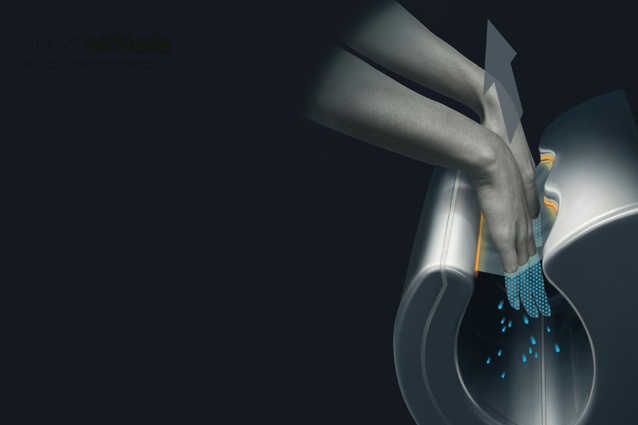Foreign correspondent
Lynne Elvins ventures into the washroom, and laments a lack of pliability in design.
It’s been around for a while now, but I have to confess I still don’t like the Dyson Airblade hand dryer. As an advocate of sustainable design, I should love it. It uses up to 80 per cent less energy and it is the only dryer to be awarded the Carbon Reduction Label from the UK Carbon Trust. It is the most efficient and environmentally responsible hand dryer on the market. But for me, it’s just not very human.
I have used hand dryers for things other than drying hands. I have stuck my head under them to dry my hair when I have been caught in the rain. I have dried my shirt with them after spilling coffee down my front. I have dried my son under them after he has been rinsed of various food or dirt. And, although I have never dried my armpits with one, Madonna sassily did just that in the 80s film Desperately Seeking Susan.
None of these things can be done with an Airblade. By designing in all the engineering excellence, they designed out all the flexibility. This for me is where other eco-efficient products can fall down. They are designed from a measurement perspective of the impacts of energy use, materials or waste. Although this is very important, what they can then lack is the personal pliability that allows us to form our own relationships with products or services.
Another washroom story came up at a recent conference on ‘personalised innovation’ when one speaker recounted a user study at an airport. After monitoring who was going in and out, it was found that the numbers of elderly people visiting the airport toilets was much higher than expected. The solution was obvious – expand the facilities to cater for the demand. But further observation revealed something else. It wasn’t that the elderly users wanted to use the toilets. Instead they were making frequent visits because it was the only place quiet enough to hear the flight announcements through the speakers.
Misunderstanding the human need can happen a lot when Western designers wade in to solve issues in developing countries. Some projects in Africa initially focused on eliminating the need for women to walk miles each day to fetch water. But after spending time with the women, it was found that they valued this as time of their own to gossip away from the village. One solution – PlayPumps – are designed with a children’s roundabout as the mechanism that drives the borehole pump. Women continue to gather while their children play and billboards on the tanks carry community health and educational messages.
My point is that sustainable design is not all about the eco-efficiency. The rigorous measurement and reductions of eco-design at its best are very valuable. Combined with a commitment to make a difference to societal issues makes us design with a greater sense of global responsibility. Without that all important business case, great designs can fail to get to market on anything but a very niche scale, which reduces their ability to have real impact. But we must not forget that understanding users at a very personal level is the route to taking us beyond the design of new products and services and into the realm of new behaviours.
With a functional product such as a public hand drier, there is an argument that adaptability is not the priority. The money and carbon saved by using an Airblade should of course be applauded. So, I do thank Mr Dyson for his energy efficient product design, but before designers start using lifecycle analysis or measuring carbon footprints don’t forget to observe the people.’










